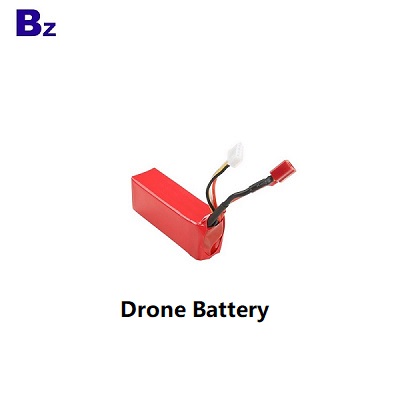Do you want to learn how to charge your drone battery correctly? This guide will help you understand drone batteries and chargers. We will also show you how to charge your drone battery and give you some handy tips. Let’s get started and keep your drone flying high.

Part 1. Understanding drone batteries
Types of Drone Batteries
Drones use different types of batteries. Lithium polymer (LiPo) and lithium-ion (Li-ion) are the most common.
Lithium Polymer (LiPo):
- Lightweight and powerful.
- You can shape it to fit various spaces.
- It needs careful handling to avoid damage.
- It provides high power but can overheat if not charged correctly.
Lithium-Ion (Li-ion):
- Heavier than LiPo but safer.
- Longer lifespan and more charge cycles.
- More stable and less likely to overheat.
- People commonly use them in consumer electronics and larger drones.
Both types have their pros and cons. LiPo batteries are great for high performance, while Li-ion batteries are more durable and stable.
Importance of Proper Charging
Proper charging methods are crucial for optimizing drone battery performance and longevity due to several key reasons:
- Maximizing Battery Life: Correct charging techniques such as balance charging help ensure all cells in the battery pack reach the same voltage, preventing premature wear and extending the overall lifespan.
- Safety Considerations: Following manufacturer-recommended charging practices reduces the risk of battery overheating, swelling, or even catching fire, which can occur with improper charging.
- Maintaining Performance: Charging batteries at the correct voltage and current levels helps preserve their capacity and discharge capabilities, ensuring consistent performance during flights.
- Avoiding Damage: Overcharging or undercharging can lead to irreversible damage to the battery cells, reducing efficiency and potentially rendering them unsafe.
Part 2. Drone battery chargers
Types of Drone Battery Chargers
Drone battery chargers come in several types, each designed to cater to different needs and battery specifications:
USB Chargers:
Compact and portable, USB chargers are convenient for charging drone batteries using a standard USB port.
- Suitability: Ideal for small drones with built-in batteries or micro-sized LiPo batteries.
AC/DC Balance Chargers:
These chargers are versatile and capable of charging various battery chemistries like LiPo, Li-ion, NiMH, and NiCd.
- Features: Offer balance charging to ensure all cells in a LiPo battery reach the same voltage, which is crucial for longevity and safety.
- Applications: Suitable for most drone batteries, from consumer drones to professional-grade models.
Field Chargers:
These chargers, designed for use in the field or remote locations, are often compact and powered by external sources like car batteries or solar panels.
- Portability: Essential for drone operators who need to charge batteries away from traditional power outlets.
Choosing the Right Charger
Selecting the appropriate charger for your drone battery is crucial to maintain performance and ensure safety:
Battery Compatibility:
- Consideration: Verify that the charger supports the type and chemistry of your drone’s battery (e.g., LiPo, Li-ion).
- Importance: Using an incompatible charger can damage the battery or pose safety risks during charging.
Charge Rate:
- Assessment: Check the charger’s maximum charge rate, which should align with the battery’s recommended charging rate.
- Optimization: Higher charge rates can reduce downtime between flights but should be within safe limits to avoid overheating or damage.
Safety Features:
- Essential: Look for chargers with safety features like overcharge protection, temperature monitoring, and automatic shut-off.
- Precaution: These features prevent overcharging, which can lead to battery swelling or even fire hazards.
User Interface and Ease of Use:
- Consideration: Ensure the charger’s interface is user-friendly, with transparent displays and intuitive controls.
- Convenience: Simplifies the charging process and minimizes the risk of errors during operation.
Part 3. Charging the drone battery
Charging your drone battery is crucial for optimal performance and safety when done correctly. Here’s a detailed guide on how to charge your drone battery effectively:
Preparation Before Charging:
- Check Battery Condition: Inspect the battery for any physical damage or swelling before charging.
- Verify Charger Compatibility: Ensure the charger is compatible with your drone battery type (e.g., LiPo, Li-ion) and voltage requirements.
- Prepare Charging Area: Choose a well-ventilated, fire-safe area away from flammable materials.
Charging Process:
- Connect Charger: Plug the charger into a suitable power source (AC outlet or DC power supply).
- Connect Battery: Connect the drone battery to the charger using the appropriate connectors.
- Set Charging Parameters: Select the correct charging mode (balance charge for LiPo batteries) and set the charging current as per battery specifications.
- Monitor Charging: Monitor the charger during the process to ensure it operates smoothly without overheating.
Safety Measures During Charging:
- Temperature Monitoring: Monitor battery and charger temperature throughout the charging cycle to prevent overheating.
- Use Charging Bags: Consider using a LiPo charging bag or fireproof container to contain potential battery fires.
- Avoid Overcharging: Remove the battery from the charger promptly once fully charged to prevent overcharging, which can degrade battery performance and safety.
Post-Charging Care:
- Cool Down: Allow the battery to cool down for a few minutes after charging before handling or storing.
- Storage Voltage: For long-term storage, discharge the battery to around 50% capacity to maintain optimal battery health.
- Inspect Battery: After charging, inspect the battery again for any signs of damage or irregularities.
Regular Maintenance:
- Charge Regularly: Even if not used, charge and discharge the battery to maintain its capacity.
- Follow Manufacturer Guidelines: Adhere to specific recommendations from your drone and battery manufacturers for charging intervals and procedures.